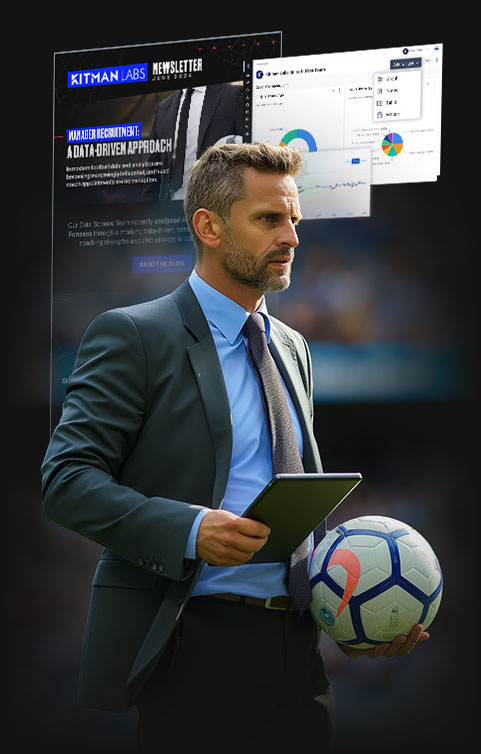Performance intelligence distills insights from data that teams can apply for real-world impact. In a groundbreaking new study under peer review, Kitman Labs Performance Intelligence Research Initiative (PIRI), led by Dr. Martin Buchheit & Dr. Derek McHugh, analyzed massive data sets from 19 elite teams to tackle one of the biggest topics in global sport: hamstring injuries.
The report’s findings are extraordinarily relevant as teams confront ever more dynamic fixture schedules. They are also surprisingly counter-intuitive and highlight the incredible value waiting to be unlocked for smart teams who embrace the performance intelligence mindset. Let’s take a look.
The Kitman Labs PIRI researchers set out to answer a key question: confronting wildly dynamic fixture schedules, how can teams build a performance program that gives the right level of stimulus, but keeps athletes healthy and able to compete?
The reality of the global elite sport calendar makes for highly dynamic fixtures schedules. Teams don’t go and play Sunday to Sunday – they confront wild variations in the number of days between games. This is hugely challenging for leaders trying to determine the right amount of technical training and practice athletes should undergo in between games.
To answer this question, our experts set out to find “optimal intensity” for near-to-maximal sprinting speed (MSS) and when teams should look to expose their athletes to this intensity to build resilience and protect their athletes from unnecessary injury. This is something that had never been examined scientifically, despite its immense importance in terms of match performance and hamstring injury management.
The (massive) datasets we crunched:
The team examined the association between near-to-MSS exposures and match hamstring injury rate, using retrospective data from 19 elite teams performing in top football leagues across the globe. We more precisely also looked at the timing of these exposures within turnarounds of varying length. We believe that the information provided will help performance staff support managers to optimize the programming of their micro cycles, within each individual team’s own unique context.
While looking at these huge amounts of historical data, we asked several questions: ‘When people train, how likely are they to break or not? How fast do they need to run to gain protective effect from sprinting so it translates into a game? When designing a training session, how fast or slow should athletes move through it to build the right resilience and play and perform consistently while staying healthy?
We know this isn’t the only thing to worry about to avoid hamstring injury. But it’s a big part of it.
What we discovered will surprise many:
Most teams will include high-intensity sprinting when they feel they have a long enough stretch of time between games, but the study’s results tell us they should also do this during shorter windows as it delivers a protective effect against hamstring injury.
“It’s clear the thought process of most teams is ‘We don’t have enough time in between games, and we want to give our athletes a chance to recover. So let’s not sprint them.’ But the data tells us high-velocity practice may actually be incredibly important even when clubs have only short windows. What’s more, it appears that the optimal day for MSS may be two days out from game day: statistically speaking, this is when athletes may get exposure to greater than 95% of their max speed to build resilience and have the best chance of avoiding hamstring injury.”
If this feels incredibly counter-intuitive, don’t worry, that’s the fascinating thing about performance intelligence: on our journeys with our elite partners, we ask questions together and the insights we get aren’t always what we expect.
Why does this matter? First and foremost, because this research empowers coaches and trainers to help athletes stay healthy, preserve their careers, and boost performance on the pitch when it matters most – on game-day. But the findings are also deeply significant because they illustrate how performance intelligence can align coaches, data scientists, medics, S&C practitioners, and athletes and let them see the world through the same lens.
The continuing research coming out of our Performance Intelligence Research Initiative (PIRI)—in particular, the recent on-going series related to injury risk—is one key discipline that sets Kitman Labs apart from other vendors. For this reason, we are in a unique position to offer our customers more than simple opinions, educated guesses, or black box “predictions.” Instead, our ability to combine analytics with more than five years of data and research enables us to offer more accurate insights that are informed by real-world best practices.
Remember, the performance intelligence approach empowers teams by turning their data into intelligence for real-world impact. As applied here to hamstring injuries, it helps them understand the implications for the type of drills they design in the context of their unique goals and their specific fixture schedule. This has never been done in our industry before – and we’re proud to offer these insights now.
Next topic?
Helping people leverage their data to gain insights and achieve greater performance is what motivates us as professionals and past practitioners of elite sport. Which is why we encourage you to take a look at a study we just published that investigates the opposite side of this coin: how important is rest – and when do you prescribe it? You can find it here.
We’ll continue to bring together insights from both studies and distill down best practices even more to help elite teams compete and unlock the next level of performance. Watch this space!




